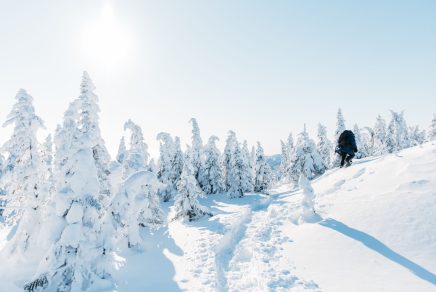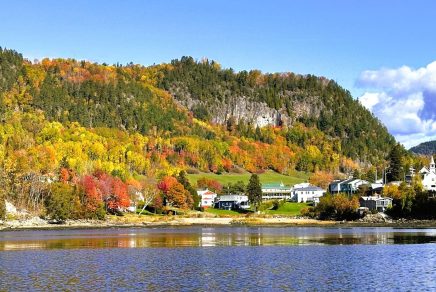Canada offers a rich variety of landscapes, weather and activities throughout the year. Whether you want to attend festivals, explore big cities, try winter sports or escape to nature, each season has something unique to offer. The best time to visit Quebec and Ontario depends on your interests, budget, preferences and activities. Here’s a simple guide to help you decide when to travel to Canada, specifically Quebec and Ontario, by season.
Rest assured, there is no good or bad time of year to visit—even if you are planning a trip to Canada in the off or shoulder season—as each season offers unique charms and challenges. From August to January, and from March to October… What motivates you? Skiing? Wildlife watching? Canoe-camping? Gourmet tours? Autumn walks?
It’s up to you.
Spring (March, April, May)
+ Spring awakening and sugar season
Oh, springtime in Canada is just the loveliest thing! It’s when nature wakes up and starts to bloom again. The March thawing marks the start of the sugaring-off season, which is a real highlight for many people. This is when the lovely folks at the sugar shacks open their doors to let you taste their delicious new batch of maple syrup. It’s usually served in a cosy wooden cabin in the forest, which is such a lovely setting! This is the perfect time for a maple syrup tasting!
+ Fewer crowds
If you’re looking for a less busy time to visit Canada, spring is the perfect opportunity! It’s not the most popular tourist period, so you’ll have plenty of space to enjoy the country at your own pace minus the people.
+ Lower prices: what is the cheapest time of year to visit Canada?
And there’s another great reason to travel off-season or between seasons: you’ll find prices are more affordable because there’s less competition! This also applies to activities, places to stay and flights between Montreal and Paris, which are often really cheap at this time of year!
+ Mild temperatures
The sun is slowly making its way back, especially in May which is often considered one of the best months to visit Canada. It’s such a lovely sight to see Canadians flocking to terraces at the first sign of warmth after months spent indoors. The great cities like Toronto and Montreal are just buzzing with an atmosphere you have to experience for yourself!
– Unpredictable weather
Spring weather can be a bit unpredictable, with the risk of a last snowstorm occurring unexpectedly.
– Winter thaw
After the winter chill, spring brings the thaw, revealing all the hidden treasures that snow has tucked away. Cities might not be in their full springtime glory before the big May cleanup, with bare trees, piles of de-icing salt on the ground, and a lot of trash. As the temperature rises, snowy mud forms on roads and sidewalks; in Quebec, it’s called slush. This is particularly noticeable in late March!
Summer (June, July, August)
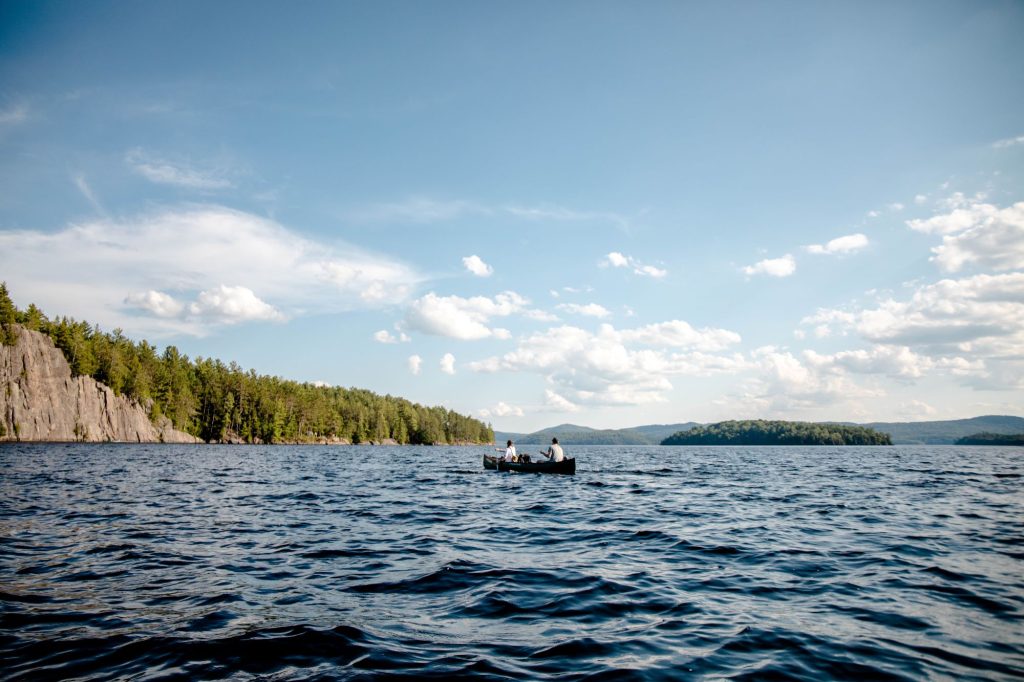
+ Warm and sunny weather is when summer starts in Canada
The weather is ideal for outdoor activities such as camping, hiking and water sports. According to many tourists, this is the best time to visit Canada and enjoy the best climate for exploring the great outdoors.
+ Festivals and events
It’s the season for outdoor festivals. Think of the Jazz Festival (June), the Mural Festival (June) or the Village du Pied Courant along the river in Montreal.
+ Urban life comes alive
The cities of Montreal, Quebec, Toronto and Ottawa are full of activities, outdoor concerts and summer markets. Outdoor terraces are set up, parks are filled and it’s a great time to enjoy the great outdoors with other Canadians.
+ National holidays in Canada and Quebec
On June 24 in Quebec and July 1 in Ontario, celebrate with fireworks, outdoor shows and special events. Not to be missed!
– High season and higher prices
June to August is high season in Canada, both in Quebec and Ontario, which can mean larger crowds at some popular sites. Accommodation and airfares may be more expensive. It’s advisable to book flights from France to Canada in the summer at least six months in advance.
– Mosquitoes and insects
There can be lots of mosquitoes in wooded and watery areas in the beginning of summer, especially in June. A LOT. And they’re voracious! It’s best to have good insect repellent and antihistamine solutions to minimise bites…
– What is the warmest month in Canada? July!
While Quebec’s extreme winter temperatures are often talked about, many poeple don’t realise that both Toronto and Montreal can get very hot and humid in the summer. This can be uncomfortable and borderline unbearable, with the thermometer hovering around 40 degrees Celsius, for most of July and August.
Autumn (September, October, November)

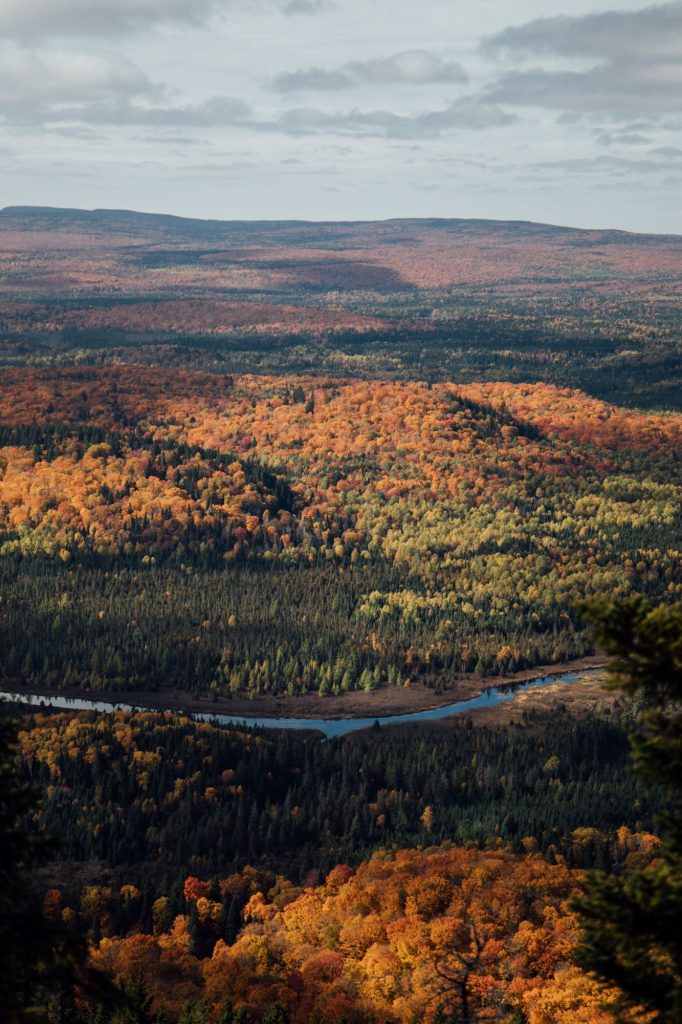
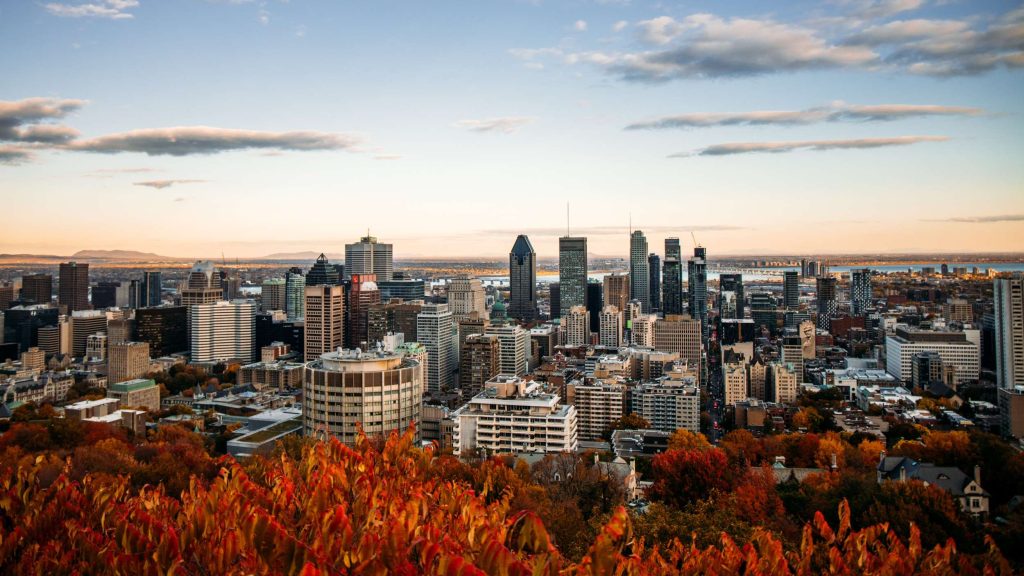
+ When does fall start in Canada and when can I expect to see the fall colours?
If you didn’t know already, most of Canada’s forests will gradually go from vibrant green to beautiful fall colours (think reds, yellows and oranges) come autumn. This is particularly spectacular in the Laurentians, Estrie and Muskoka regions of Ontario. October is generally the best month to enjoy being in nature and observing wildlife prepare for the upcoming winter – it’s such a special time of year!
+ Pleasant temperatures
Canada does indeed experience the phenomenon known as ‘Indian summer’. Note, however, that this is a controversial umbrella term that is generally considered disrespectful to Indigenous communities. Instead, we’ll refer to an autumn warm spell, which refers to a period when temperatures are above seasonal norms.
Typically, September and October are mild and ideal to spend time outside.
+ Whale watching season
Speaking of wildlife—while the whales can be seen in Tadoussac from May onwards, they’re at their most active in the St Lawrence River during the months of September and October. This is really your best chance to catch a glimpse of them!
+ Fewer tourists who know what is the best month to go to Canada
Autumn is such a lovely, quiet time of year. It’s absolutely perfect for enjoying some peaceful outdoor adventures! You’ll find there are far fewer crowds, and you’ll get to meet some really lovely locals.
+ Culinary interlude
If you’re from Europe, you might think it’s a bit strange that autumn is the peak season for wine harvests here in Canada, but it’s true! September is the perfect time to explore the Wine Route in Estrie or the Niagara Valley.
– Temperature drop
The only downside is that temperatures can drop quite quickly in October and it can get a bit gloomy in November, so some outdoor activities might be limited. But don’t worry! Just think of a few fun indoor activities ahead of time.
– End of season for some attractions
Please be advised that some tourist attractions may close or reduce their opening hours as winter approaches and we enter the autumn shoulder season.
Winter (December, January, February, March)
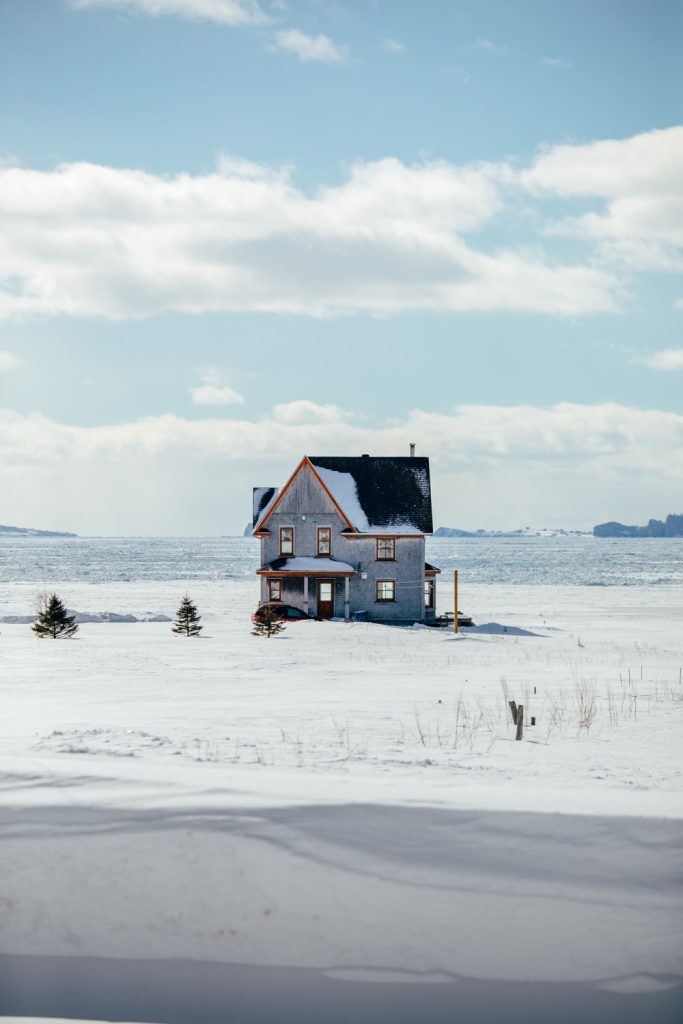


+ Winter sports
Snowboarding, ice fishing, ice skating, dog sledding, ice climbing and snowmobiling are all popular. Ski resorts such as Mont-Tremblant in Quebec and Blue Mountain in Ontario attract winter sports enthusiasts. It’s even possible to stay in an ice hotel! It’s truly the perfect season to step out of your comfort zone and push your limits for some totally sensational experiences.
+ Is December when does it start snowing in Canada?
Most of Ontario and Quebec usually get their first snowfall in December, but with climate change, we’re seeing fewer and fewer white Christmases. But when the snow does come, it’s magical! The cities and national parks are covered in a thick blanket of white, and the winter landscapes are breathtaking. Your trip to Canada in winter is sure to be an unforgettable experience!
+ Winter festivals
Far from shunning the wintry climate, Canadian people embrace their northern spirit. Quebec’s Winter Carnival, Ottawa’s Winterlude and Montreal’s Igloofest, among others, celebrate the season day and night. Contrary to popular belief, winter in Canada is never boring!
+ Festive atmosphere
The holiday season is particularly magical, with Christmas markets, fairy lights and local traditions to enjoy. Be aware of the higher prices from mid-December onwards.
– This is when winter starts in Canada with intense cold
The climate can bring with it extremely low temperatures, especially in the northern regions of the country. In order to prepare for a winter trip to Canada, it’s important to be well equipped and to wear the appropriate clothing.
– Driving can be difficult
Some journeys can be made more challenging by adverse weather conditions such as snow, wind and ice. It is crucial to ensure that you are adequately prepared for driving on snow-covered roads and to adjust your driving accordingly if you have a road trip planned during your time in Canada.
– Reduced daylight hours
The days are at their shortest and the dark nights come early, around 4 pm. Forget about long days of frolicking outdoors!


